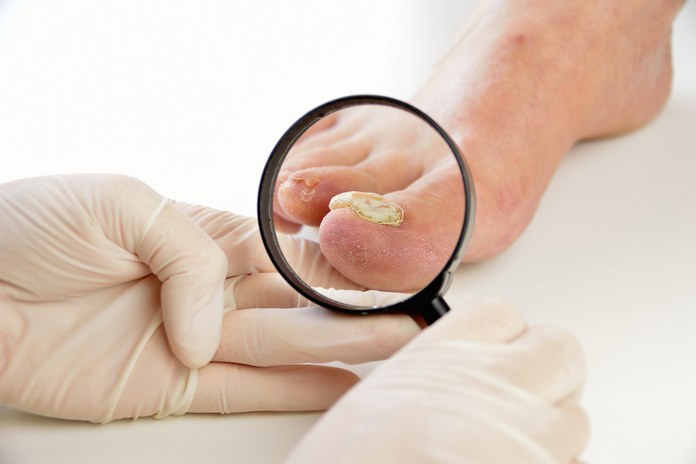Toenail Fungus Diagnosis

Severe cases might harm one’s capability to walk and may give rise to painful ingrown toenails and might occur in more severe health conditions not to tell the actual loss of your nails. It is quite important to look for professional care immediately if you notice signs of any severe infections. Your healthcare provider will check your nails. He or she might also take a few scrape debris or nail clippings from under the nail and send the nail sample to a lab to find the kind of fungus that give rise to an infection. Other conditions like psoriasis might stimulate a fungal infection in your nail. Microorganisms such as bacteria and yeast also might infect your nails. Knowing the reason for your infection helps in finding the best way of treatment. (5)
Your healthcare giver might diagnose a fungal infection in your nail by seeing your affected nail and asking queries regarding your symptoms. He or she might also do a nail clipping to see under a microscope or send it to the laboratory for a fungal culture. To check out if a patient is having nail fungus; a dermatologist checks your nearby skin and your nails. It is essential to examine the skin because the fungus might spread. You might have a skin infection already occurred by a fungus such as an athlete’s foot. To get rid of such infection, you will require treating all the infected parts.
Before providing you with the diagnosis, your dermatologist might also take a few samples. Collecting a part of debris under a nail, trimming off a bit of your nail, or even scraping off some of the skin might be beneficial. In a lab, such samples might check under a microscope to know what the reason for such a problem is. Fungal nail infections mostly affect your toenails, but you might get them on the fingernails as well. Anytime you assume you are having a fungal nail infection or any problem related to nails and curing it at home does not aid, visit your healthcare provider or podiatrist (foot doctor). The sooner you visit the doctor, the better you can have the treatment.
Fungal nail infection might get worse over time. Visit your healthcare provider if you doubt your nails have turned black or brown, if it hurts suddenly, or if it pulls away from your nail bed. If you are having diabetes and you check that the look of your toenail has changed a bit, visit your healthcare provider immediately to solve the problem from getting worse. However, your healthcare provider might be able to tell you that having a fungal nail infection just by seeing at your foot or your fingers. But they might also do a few tests to make sure. Therefore, they might check by taking samples of your nails therefore, a diagnosis of fungal nail infection might sometimes be made by only visual inspection; laboratory tests might not be needed but consist of:
- Culture
- Microscopy
